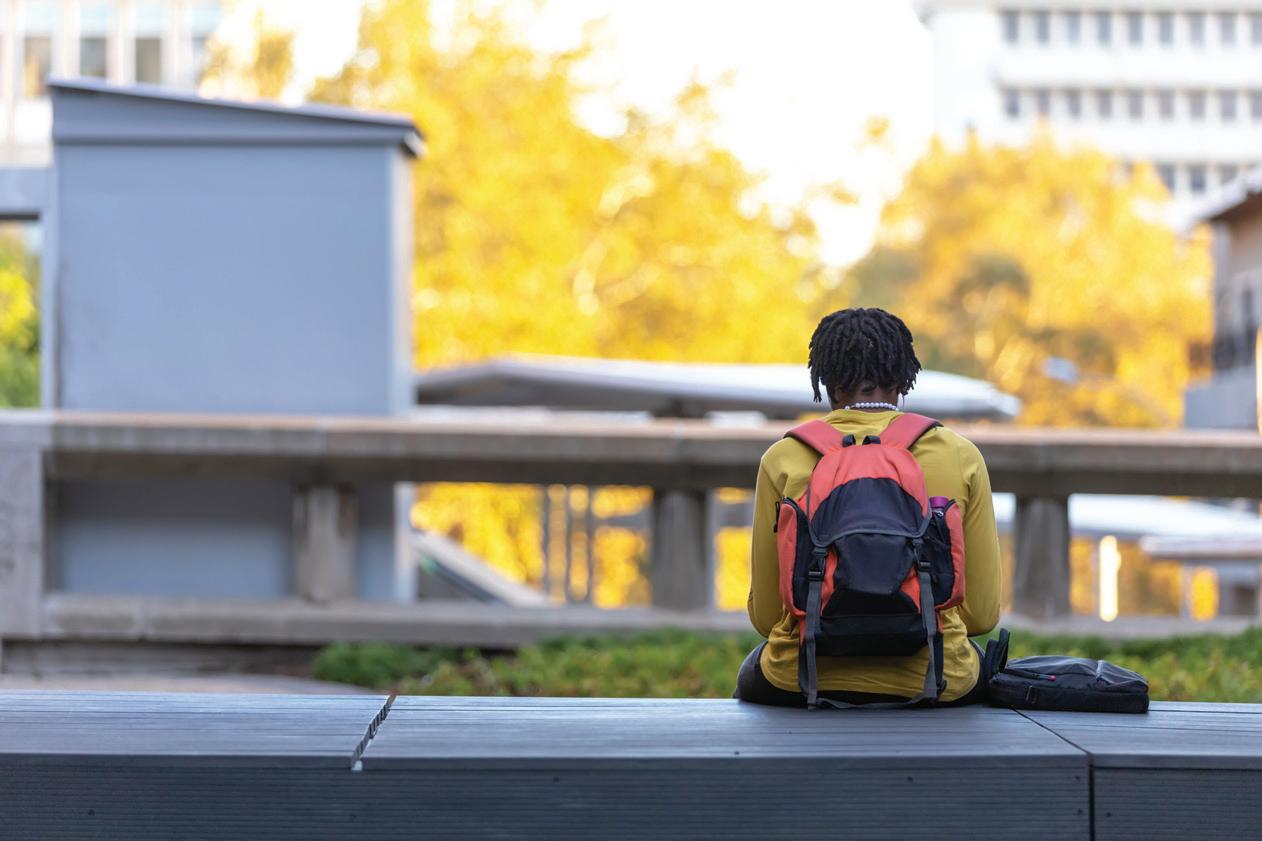
4 minute read
NEWS: A+ FOR RESILIENCE
HOW WELL IS WITS ADJUSTING TO THE CHALLENGES CAUSED BY THE PANDEMIC?
BY UFRIEDA HO
To move a behemoth such as Wits University in a hurry is no easy task. The test of its agility began when the initial COVID-19 lockdown was extended from a temporary disruption to a “new normal” that – at the time of writing – has remained in place.
The main challenge was how to develop and implement an online academic programme and have it in place between the time of lockdown at the end of March and the time classes were scheduled to start on 20 April.
Shirona Patel, Wits Head of Communications, says, “We had about two or three weeks during recess to repurpose academic content for online teaching. It was a steep learning curve, getting lecturers to be ‘super stars’ on the technology and coaching them to teach to a camera, rather than a classroom, and to record their lessons remotely. We also had students who didn’t have devices, software or data.” Wits’ e-learning teams went into high gear, putting key content onto existing online learning management platforms Sakai and Moodle. They helped lecturers record lessons and shape dynamic content that would have impact online.
The Motsepe Foundation donated R3 million towards buying devices and the Post Office successfully made door-to-door deliveries of the devices via their courier service. “The Post Office did a great job – not a single computer went missing or got damaged on the way. The students took photos of themselves receiving their laptops. We received many notes and messages from students expressing their thanks and telling us how the laptops helped,” Patel says.
The university also pushed for the main cellular networks to zero rate educational content so that students could access their learning material without racking up data costs. The university negotiated a 30 GB monthly allowance for all its students and this agreement remains. A trickier task was to find a data solution for the University’s 3 000 international students spread across 100 countries. Options such as reimbursements or allowances have been negotiated for these students.
More behind-the-scenes work included raising funds who did not have and donations to buy 5000 laptops for students who devices, from funds and didn’t have devices. An additional challenge was that donations raised many of these students had already left Gauteng for their home province or country.

W I T S U N I V E R S I T Y H A S H A D T O A D J U S T T O A N E W M O D E L O F L E A R N I N G THAT INVOLVES ONLINE AS WELL AS LIMITED FACE-TO-FACE CONTACT
Image: Shivan Parusnath
By May, Wits started bringing some students and staff back to its campuses. Government regulations allowed for a third of Wits’ 37 000 students to return during relaxed lockdown restrictions. Wits started with 500 final year medical students.
By June this number was extended to 5000 students on a rotational basis and mostly those who needed to be back for clinical training or those who needed to be on campus to complete laboratory experiments. Many clinical students also volunteered to be at the coalface of hospitals and clinics that needed assistance with COVID-19 screening and testing.
A small number of 1500 res students were also allowed back. They were assigned their own rooms and issued food packs at mealtimes to avoid congregating in dining halls.
The University has to be routinely “deep cleaned” with screening and testing systems in place. Wits’ molecular biology students manufactured high-alcohol content hand sanitisers and printed face shields for University personnel. Everyone has also been issued with two reusable and washable face masks and personal protective equipment was issued for cleaning staff and others at higher risk.
All these arrangements have come at a price tag of R10 million for the months between March and June.
“Contact learning, is of course, still the best option, but we must also have blended learning options. We had planned to introduce online teaching platforms by 2023 or 2024 but in the end we had to get this done within a few weeks,” Patel says.
Patel says current student numbers have remained in line with the same period last year. “We haven’t seen any significant deregistering and we’ve actually had an increase in people applying to do post graduate studies.”
There has been a drop-off, however, in international student registration numbers – largely because there wasn’t clarity on when borders would reopen.
On a broader public health front, Wits experts have been at the coalface in fighting the pandemic.
Wits doctors and clinicians as well as medical student volunteers have stepped up to the plate to relieve the burden on overworked healthcare professionals.
Wits is the lead institution in South Africa collaborating in three international vaccine trials (see page 14). The first, known as the South African OxCov-19 Vaccine VIDA-Trial, started in June and is a collaboration with the University of Oxford and the Oxford Jenner Institute. The second, started in August, is a Phase 2 trial to evaluate if the nanoparticle S-protein in the vaccine known as NVX-CoV2373 offers protection against COVID-19. The third, a Johnson & Johnson product called Ad26. COV2-S, which will be the first Phase 3, trial started in September.
Numerous Wits researchers and academics across disciplines have also been key experts advising government, engaging with the media and the public, sharing crucial research.
Patel acknowledges that the university is adapting, tweaking and learning as the pandemic runs its course. Most positive perhaps is that Witsies have chosen to be part of the solution in the battle against COVID-19.










